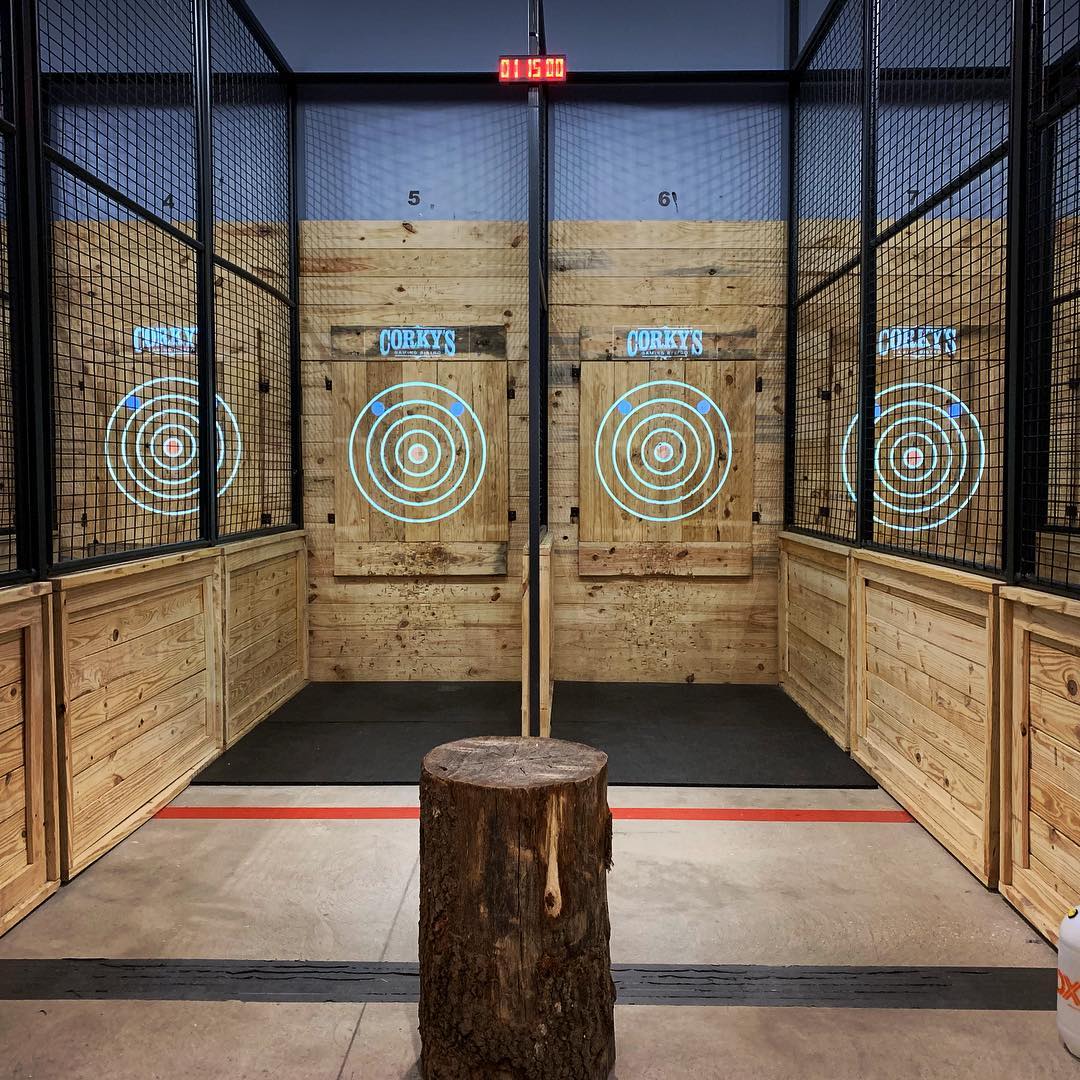Axe Throwing Denver: A Special Date Night Idea That Impresses
Axe Throwing Denver: A Special Date Night Idea That Impresses
Blog Article
The Fun of Axe Throwing: Exactly How This Sport Combines Skill and Adrenaline for a Blast
Axe throwing has become a captivating sport that masterfully links the requirement for precise skill with the thrill of adrenaline, offering participants a interesting and special experience. The act of hurling an axe in the direction of a target requires concentration and method, simultaneously cultivating an atmosphere of friendship and pleasant rivalry. This intriguing mix of mental focus and physical effort has made axe throwing a preferred option for those looking for both recreation and a sense of success. To really appreciate the depth and appeal of this activity, one have to consider its beginnings, the essential devices, and the foundational methods that guarantee both safety and security and enjoyment.
The Beginnings of Axe Throwing
Axe tossing, a leisure activity that has obtained substantial popularity recently, traces its origins back to ancient times. This primitive sporting activity go back to early human background, when axes were primarily utilized as devices and tools. The earliest documents of axe usage in competitive contexts are located amongst the Celts and Vikings, who threw axes for sport along with in combat training. The practice was not just a pastime yet a vital ability for survival and war.
Medieval European warriors, particularly during the Center Ages, practiced axe tossing as part of their martial training. The Francisca, a sort of throwing axe used by the Franks, came to be famous for its lethal accuracy. This typical tool was made to be tossed at opponent guards and armor, showcasing its dual energy in both sporting activity and battle.
In more current history, axe throwing saw a resurgence in the logging camps of North America in the 20th and 19th centuries. Lumberjacks would participate in friendly competition, testing their accuracy and stamina by targeting at wooden targets. This evolution from a survival ability to a leisure activity has led the way for its modern-day resurgence, with specialized places and organizations now commemorating the sporting activity worldwide.
Tools You Required
Comprehending the abundant background of axe tossing boosts the appreciation of the sport's modern-day iteration. Central to this thrilling task is the equipment, which is essential for both safety and security and performance. The main tool is, naturally, the axe. For leisure and affordable axe throwing, the most frequently utilized type is the hatchet, normally weighing between 1.25 to 2 pounds with a manage size of about 16 inches. The axe must have a sharp, well-kept blade and a manage made from sturdy timber or composite product, making sure a great hold and balance.
Equally crucial is the target. Regulation targets are built from wood, with softwood varieties like pine or cottonwood being favored for their capacity to take in and hold the axe. The target is typically divided into five concentric circles, each with a details point worth, to help with rating.
Security gear, however often forgotten, is critical. Safety handwear covers can improve grasp and stop blisters, while closed-toed footwear are a should to secure feet from dropped axes (denver axe throwing). A well-lit, sizable tossing area, full with safety and read what he said security barriers, ensures a controlled environment where individuals can focus on developing their skills.
Standard Techniques Explained
Mastering the basic techniques of axe throwing is crucial for both safety and security and effectiveness. The dominant hand needs to be positioned directly below the axe head, while the non-dominant hand supports the end of the manage.
Your dominant foot should be a little forward, lining up with your target. This positioning help in keeping security and guiding power properly in the direction of the target.

Security First
Guaranteeing security in axe throwing is critical to developing an injury-free and Full Report enjoyable experience. Precaution start with the venue design. A properly designed axe tossing facility attributes clear separations between throwing lanes, durable backgrounds to catch stray axes, and non-slip flooring to avoid accidents. Furthermore, adequate illumination is essential to assist individuals maintain visual precision and spatial awareness.
Advantages of Axe Throwing
Axe tossing offers a myriad of advantages that expand past basic entertainment. Literally, it gives a full-body exercise, engaging muscle mass in the arms, shoulders, back, and core. The repeated motion of tossing the axe additionally boosts hand-eye coordination and great electric motor abilities. For those looking to boost their total health Click Here and fitness, axe throwing can act as a vibrant and engaging type of exercise.
Psychologically, axe throwing requires precision, focus, and strategy, making it a superb method to hone cognitive abilities. The focus needed to hit the target can work as a kind of mindfulness, enabling participants to remove their minds and lower anxiety. This psychological involvement can be especially useful in aiding people develop much better problem-solving abilities and mental resilience.
Socially, axe throwing is commonly enjoyed in team settings, promoting team-building and camaraderie. Whether as component of a business occasion or a laid-back getaway with buddies, the sporting activity encourages interaction and partnership. In addition, the communal experience of finding out and improving together can enhance connections and develop long lasting memories.
Verdict

The earliest documents of axe use in affordable contexts are discovered among the Celts and Vikings, who tossed axes for sporting activity as well as in battle training. Release the axe when your hands are around at eye degree, enabling the axe's natural rotation to assist it towards the target.
A properly designed axe throwing center features clear separations in between tossing lanes, strong backdrops to capture stray axes, and non-slip floor covering to protect against mishaps. Participants have to be instructed on the correct means to toss the axe and deal with, highlighting managed, deliberate activities over forceful throws.
In summary, axe tossing stands out as a sport that masterfully integrates accuracy, ability, and adrenaline.
Report this page